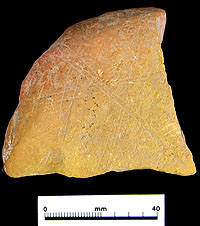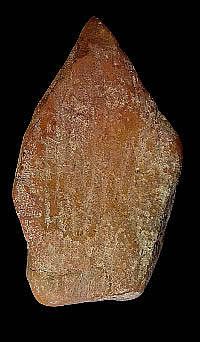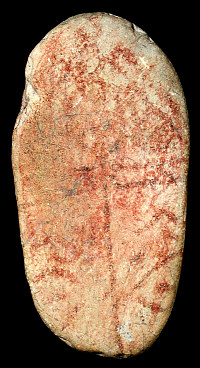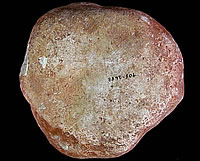Mineral Pigments
Red ocher and related minerals were highly valued by native peoples for creating pigments used for painting faces and cave walls, decorating clothing and other items, symbolic offerings (blood red pigment), and even tattoos. These iron-rich minerals are not particularly common in most of the region, but occur in primary context in various geological formations and can be found in secondary context in gravel bars and clay banks. The fact that we find bits and traces of ochre in many archeological site excavations suggests that places where ocher easily could be found must have been regularly visited by native peoples. Prehistoric interest in ocher, especially red ocher, is not at all unique to the Plateaus and Canyonlands region; the use of mineral pigments is known throughout the ancient world.
Technically, the suite of minerals pigments used in the region is geochemically and mineralogically complex. Red ocher, yellow ocher, hematite, limonite, and goethite are among the terms used to characterize these pigments. Simply put, most are earthy mineral oxides of iron mixed with varying amounts of clay, sand, and water. Some forms are soft and can be transformed into useful pigments easily. Others are harder and must be crushed and sometimes heated before they can be combined with binding and emulsifying liquids including water, fat, and soapy plant compounds. Many rocks bearing iron oxides have layers or pockets of purer, more intensely colored minerals and these were targeted for removal to create pigments.
![]()



